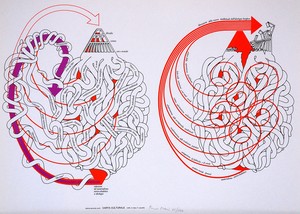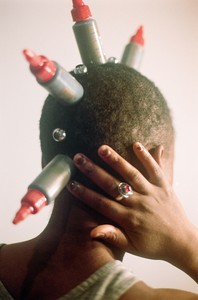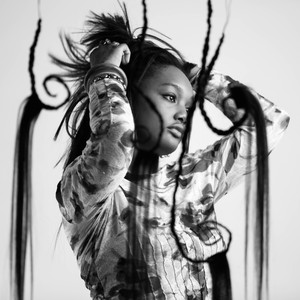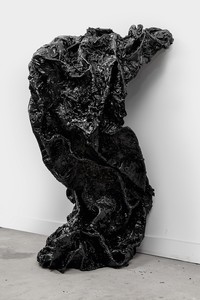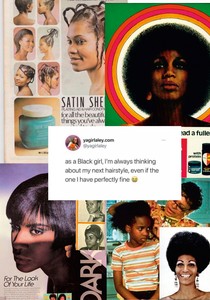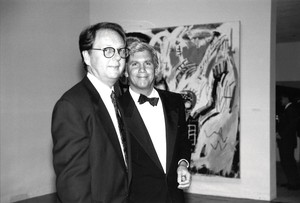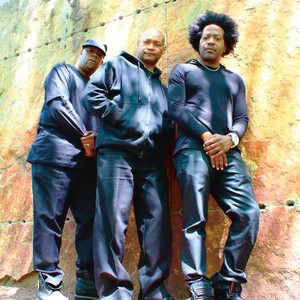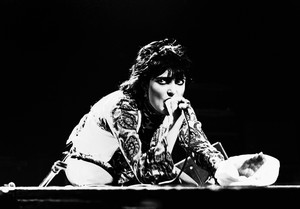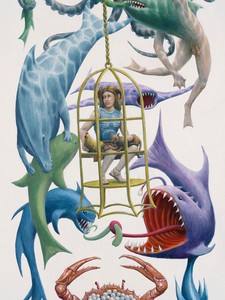Looking at the work of Allana Clarke and Lauren Halsey, I feel a deep connection to the beauty supply store, a pivotal institution in Black hair culture. This space serves as a mecca nurturing transformation, enhancement, and self-esteem. The beauty supply store is almost synonymous with the experience of being a Black woman.
Both Halsey and Clarke represent Black hair culture in unique and compelling ways. Halsey’s work glorifies and preserves the vibrance of braiding hair and the creativity of traditional Black hairstyles. Her art showcases Black hair culture in a fantastical, empowering, and culturally rich light. It represents the avant-garde, free, and expressive nature of Black hair, beautifully capturing these styles as a time capsule, offering a glimpse into the evolving era of Black hair.
Clarke on the other hand focuses on track glue, a product used in Black hair-styling. Her sculptures made from this glue critique its use, because, despite allowing for expressive hairstyles, it can cause traction alopecia. Clarke uses track glue as a metaphor for the pressures Black women face in society. She speaks to the way we sometimes conform to beauty standards even if they harm us, pointing out the struggle between beauty and survival in a world where hair can influence our opportunities and relationships. Track glue represents this tension.
Clarke’s work is about the lengths we go to fit in and be seen as special, often by aligning with unnatural standards. It critiques how society dictates our worth through beauty standards. Halsey’s art celebrates the creativity and heritage of Black hair, while Clarke examines its complex effects. Both artists are connected by the beauty supply store, the only place to find both braiding hair and track glue.
“The Gospel according to the Beauty Supply” is my response to the impact of the beauty supply store on both artists’ work and on Black hair culture. I compare the beauty supply store to a church because it’s a place where we go to transform, feel better about ourselves, and feel safe. Finding the right pack of hair, the right earrings, or the right do-rag can be as uplifting as a spiritual experience, making the beauty supply store a place of worship in its own right. But like religion, the beauty supply store has its darker side: sometimes we go there to conform out of insecurity, and some of its products, like track glue or perms, can have long-term health effects. Despite this, the beauty supply store is a crucial part of Black life, offering comfort and connection even when it demands conformity.
Untitled
The church bells ring
I go in because I feel this place knows me
Bonnets sacred as halos
Rush to receive Communion
We looking to find god
or
Blue Magic grease
No difference
Where we from
$20s, $50s, hunnids pass in offering trays
We tithe for salvation
Or
Knotless braids
as if there’s a difference
Where we from
Everyone in the aisles
Jumping, exalting, beaming
We all feel the Holy Spirit
Or a fresh bundle
Or a new outlook on life
Or a Dr. Miracle’s hair-growth oil
We don’t know there to be a difference
